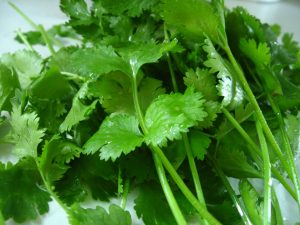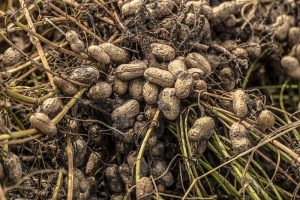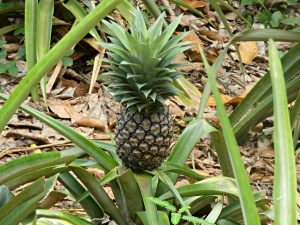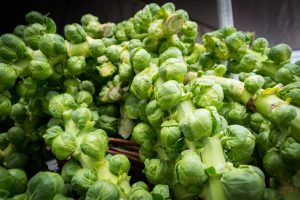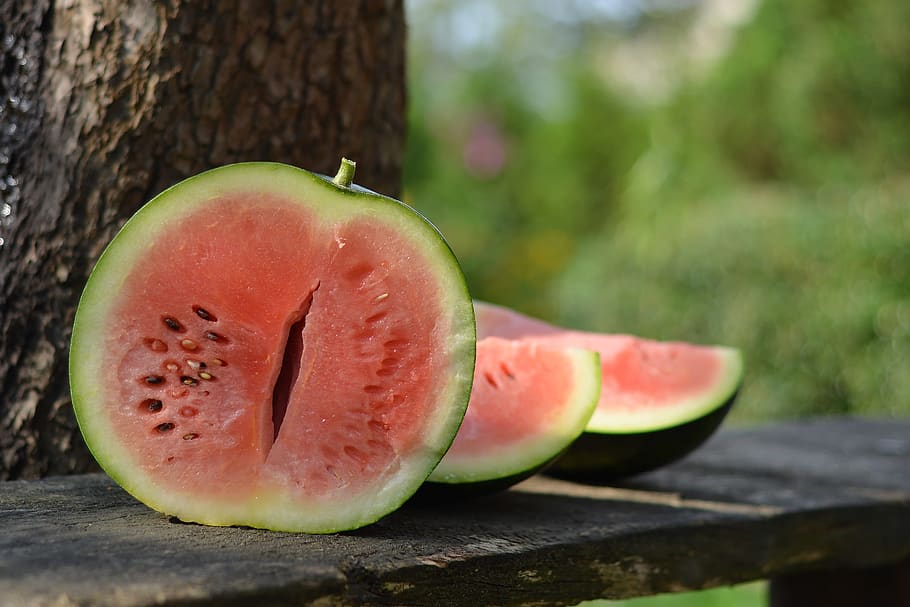
Watermelon is a refreshing and delicious summer fruit that many people enjoy. If you want to experience the joy of growing your own watermelons, then you’ve come to the right place! In this guide, we’ll cover everything you need to know about how to grow watermelon successfully. From choosing the right variety to plant care and more, let’s get started!
Choosing the Right Watermelon Variety
Watermelon is a delicious and refreshing fruit that’s perfect for hot summer days. Before you start planting watermelon seeds, it’s crucial to select the perfect variety for your garden. Here are some factors to consider when choosing the right watermelon variety:
Seedless vs. Seeded Watermelons
Seedless watermelons are an excellent option if you don’t want to deal with the hassle of removing seeds from your fruit. They are typically smaller in size and have a sweeter taste than their seeded counterparts. However, if you prefer the taste of seeded watermelons, then go for it! Seeded watermelons are often larger in size and have a slightly crunchier texture. Ultimately, both types of watermelons can grow successfully if nurtured.
Popular Watermelon Varieties
There are many delicious watermelon varieties to choose from, each with a slightly different taste and texture. Some of the most famous types include:
- Crimson Sweet: This variety is known for its deep red flesh and high sugar content. It’s perfect for making watermelon juice or eating fresh.
- Sugar Baby: This small, round watermelon has a sweet flavor and is perfect for small gardens or containers.
- Black Diamond: This large, oval-shaped watermelon has a dark green rind and sweet, juicy flesh. It’s perfect for picnics and parties.
It’s essential to research the different varieties to choose the best one for your unique needs. Consider factors like size, taste, and texture when making your decision.
Hybrid vs. Heirloom Watermelons
Hybrid watermelon varieties are created by crossing two different types of watermelons to produce new traits. They are often bred for disease resistance, high yields, and other desirable characteristics. Heirloom watermelons, on the other hand, are non-hybrid varieties that have been passed down for generations. They are often prized for their unique flavors and textures.
Selecting hybrid watermelon seeds is a popular option because they are often more reliable and easier to grow than heirloom varieties. However, if you’re looking for a more unique watermelon experience, consider trying an heirloom variety.
Overall, choosing the right watermelon variety is an important step in growing a successful crop. Consider your preferences and growing conditions when making your decision, and enjoy the sweet, juicy fruits of your labor!
Preparing the Soil for Watermelon Growth
Watermelons are a summer staple and a favorite fruit for many people. Growing watermelons requires specific soil conditions to ensure a successful crop. Here are some tips for preparing your soil:
Soil pH and Nutrient Requirements
The first step in preparing your soil for watermelon growth is to test the pH level. Watermelon plants prefer a slightly acidic soil with a pH between 6.0 and 6.8. If your soil’s pH level is too high or too low, it can affect the plant’s ability to absorb nutrients from the soil. You can purchase a soil test kit from your local garden center or send a sample to a soil testing lab for analysis. Once you know your soil’s pH level, you can adjust it by adding materials like sulfur, lime, or wood ash.
In addition to the pH level, watermelon plants also require specific nutrients to grow. Adding compost and organic matter like well-rotted manure can help improve soil fertility and structure. These materials are rich in nutrients like nitrogen, phosphorus, and potassium, which are essential for healthy plant growth.
Soil Drainage and Water Retention
Watermelon plants don’t like to sit in overly wet soil, so it’s crucial to ensure proper drainage. Tilling the soil before planting and creating raised beds can help with drainage. Raised beds also provide better soil aeration, which can help prevent soil compaction.
At the same time, adding materials like mulch to the soil can help to keep the soil moist, ensuring consistent growth and fruit yield. Mulch helps to regulate soil temperature and reduce evaporation, which can be especially helpful in hot, dry climates. You can use materials like straw, leaves, or grass clippings as mulch.
Adding Organic Matter and Fertilizers
Watermelons require frequent fertilizer applications, especially early in the growing season. Adding organic matter and fertilizers will help provide the necessary nutrients for healthy plant growth. Organic fertilizers like compost and chicken manure can be particularly helpful.
When applying fertilizer, it’s essential to follow the manufacturer’s instructions carefully. Over-fertilizing can lead to plant burn and reduce fruit yield. It’s also important to apply fertilizer evenly and avoid getting it on the plant’s leaves, as this can cause damage.
In addition to organic fertilizers, you can also use synthetic fertilizers. However, it’s important to use them sparingly and avoid overuse, as this can lead to soil depletion and environmental pollution.
By following these tips for preparing your soil, you can create the ideal growing conditions for your watermelon plants. With proper soil preparation and care, you can enjoy a bountiful harvest of sweet, juicy watermelons all summer long.
Planting Watermelon Seeds
Watermelons are a delicious and refreshing fruit that are perfect for hot summer days. When it comes to planting watermelon seeds, timing is everything. Here are some tips for planting your watermelon seeds successfully:
When to Plant Watermelon Seeds
Watermelons prefer warm soil and air temperatures for optimal growth. Therefore, it’s best to wait until soil temperatures reach at least 70 degrees Fahrenheit before planting. This usually occurs in late spring or early summer, depending on your location. You can use a soil thermometer to check the temperature of your soil.
It’s important to note that watermelons need a long growing season, typically around 80-100 days from planting to harvest. Make sure to plan accordingly and plant your seeds early enough to allow for a full growing season.
Choosing the Right Location
Watermelons need full sun and well-draining soil to thrive. Choose a location in your garden that receives at least 6-8 hours of direct sunlight per day. Avoid planting watermelons in low-lying areas that are prone to flooding or standing water, as this can lead to root rot.
It’s also a good idea to plant watermelons away from other plants in your garden, as they can take up a lot of space and compete for nutrients and water.
Indoor Seed Starting Tips
If you live in an area with a short growing season or want to get a head start on your watermelon plants, starting your seeds indoors is a great option. Use a high-quality seed starter mix and plant your seeds in biodegradable pots that can be planted directly in the ground.
Place the pots under grow lights or in a sunny windowsill until it’s time to transplant them outdoors. Make sure to keep the soil moist but not waterlogged, as this can lead to mold and fungal growth.
Transplanting Seedlings to the Garden
When it’s time to transplant your seedlings to the garden, make sure to space them at least three feet apart. Watermelon plants need plenty of room to grow and vine out, so give them plenty of space to spread. It’s also a good idea to add a layer of mulch around each plant to help retain moisture and keep weeds at bay.
Keep the soil consistently moist in the days and weeks following transplanting to encourage healthy plant growth. Watermelons need a lot of water, especially during hot summer months, so make sure to water deeply and regularly.
Harvesting Your Watermelons
Watermelons are typically ready to harvest 80-100 days after planting, depending on the variety. Look for the following signs to determine if your watermelon is ripe:
- The underside of the watermelon should have a creamy yellow spot where it was resting on the ground.
- The stem should be brown and dry.
- The watermelon should have a hollow sound when tapped.
- The skin should be firm and the fruit should feel heavy for its size.
Once your watermelon is ripe, it’s time to enjoy the fruits of your labor! Cut the watermelon into slices or cubes and enjoy it on its own or in a refreshing summer salad.
Watermelon Plant Care
Watermelon plant care is not only essential but also rewarding, as it can provide you with a bountiful harvest of juicy, delicious watermelons. Here are some tips to help you with the process:
Choosing the Right Site for Planting Watermelon
Watermelon plants need full sun, at least six hours per day, to grow and produce fruit. Therefore, it is crucial to choose a site that gets plenty of sunlight. Additionally, watermelon plants require well-draining soil with a pH level between 6.0 and 6.8. If the soil is too acidic or alkaline, the plants may struggle to absorb nutrients, resulting in stunted growth and poor fruit quality.
Watering Requirements for Watermelon Plants
Watermelon plants need consistent moisture to grow healthy and strong. Regular watering is vital, especially during the blooming and fruit-setting phase. Make sure the soil stays moist but not waterlogged, as standing water can lead to disease and plant death. To keep the soil moist, you can use mulch, which will also help to suppress weeds and regulate soil temperature.
Pruning and Training Watermelon Vines
As watermelon plants grow, they can become crowded and tangled, making it difficult for air to circulate around the leaves and fruit. Pruning and training the vines can help improve airflow, reduce diseases, and provide more space for the watermelons. To prune, cut off any secondary vines that grow from the main vine, keeping only the primary stems. You can also train the vines to grow in a trellis or fence, which will save space and make harvesting easier.
Fertilizing Watermelon Plants
Watermelon plants are heavy feeders and require plenty of nutrients to grow and produce fruit. Therefore, it is essential to fertilize them regularly. You can use a balanced fertilizer with equal amounts of nitrogen, phosphorus, and potassium, or a fertilizer specifically formulated for watermelon plants. Be careful not to over-fertilize, as this can lead to excessive foliage growth and poor fruit quality.
Pest and Disease Management
Watermelon plants can be susceptible to various pests and diseases, such as cucumber beetles and powdery mildew. Regularly checking your plants for signs of pests or disease and treating them promptly is essential to limit damage and enhance your harvest yield. Using organic pest control methods like neem oil or insecticidal soap can be helpful in keeping pests at bay. Additionally, rotating your crops and practicing good garden hygiene can help prevent the spread of diseases.
By following these tips, you can ensure that your watermelon plants are healthy, strong, and productive. With a little bit of care and attention, you can enjoy a delicious harvest of sweet, juicy watermelons.
Conclusion
With the right knowledge and care, growing watermelon can be a rewarding and delicious experience. Choose the right watermelon variety, prepare the soil correctly, plant your seeds properly, and care for your plants diligently. Soon, you’ll be rewarded with a bountiful harvest of sweet, juicy watermelons – straight from your garden!



